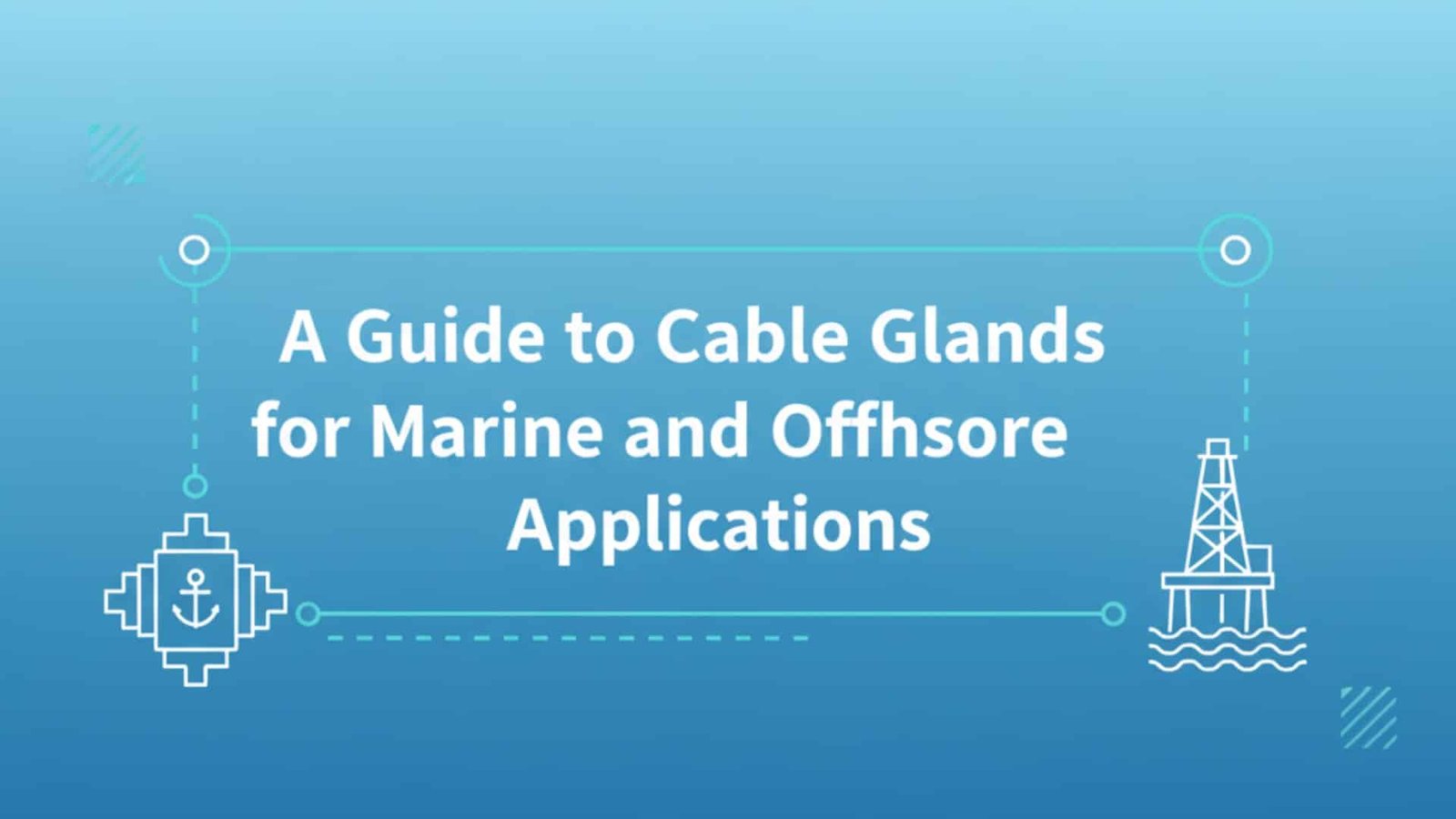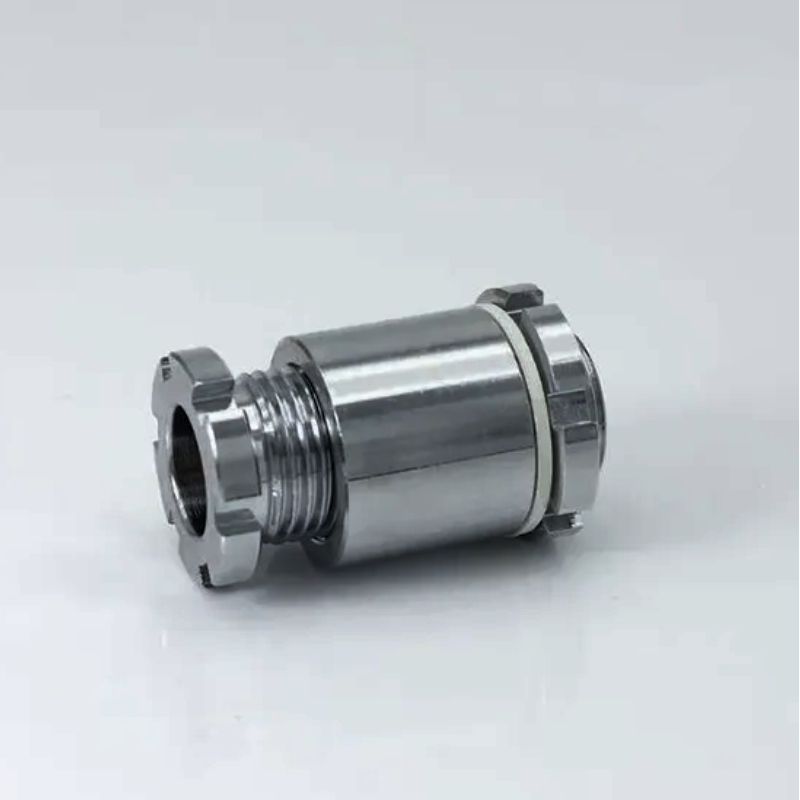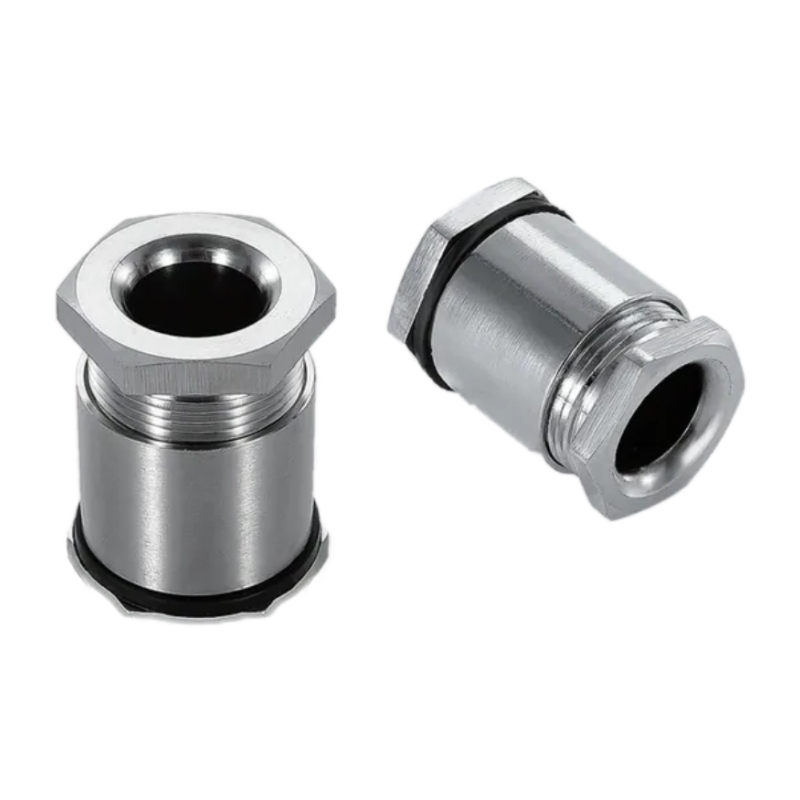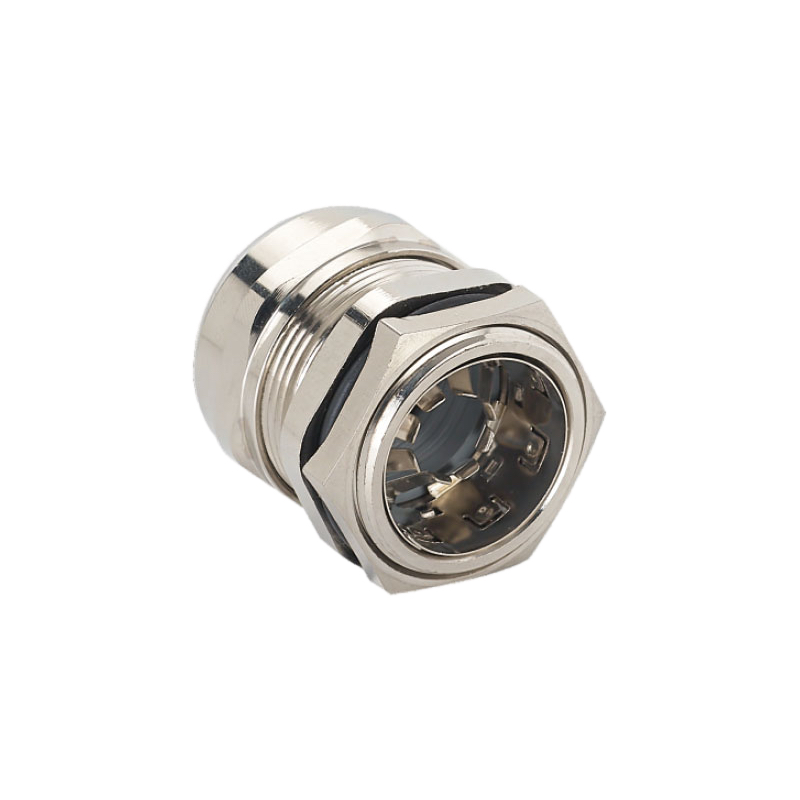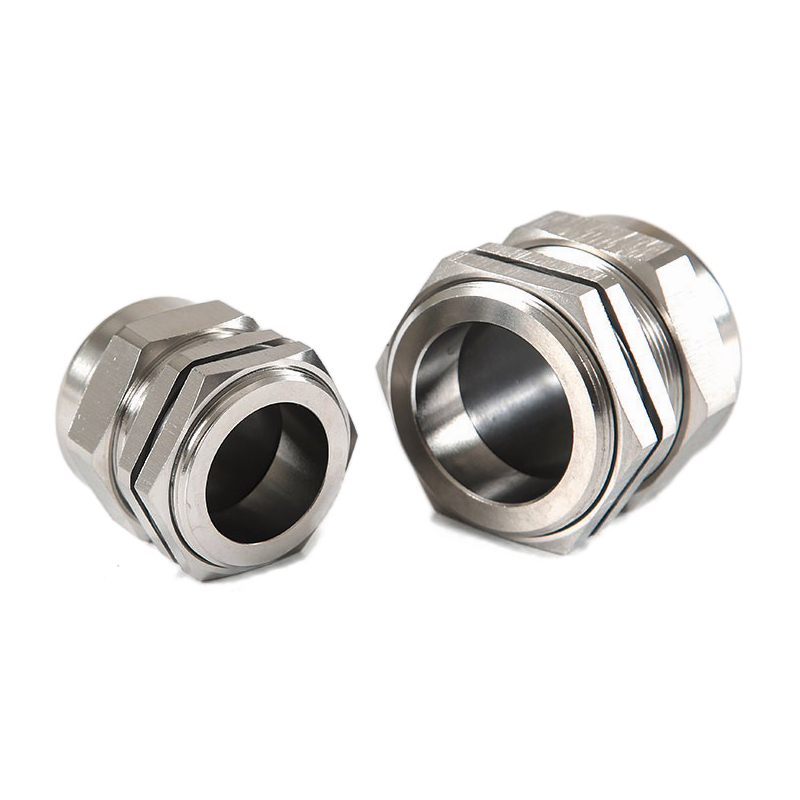Salt spray, constant vibration, and extreme weather conditions destroy standard cable glands within months in marine environments. When electrical connections fail on offshore platforms or ships, the consequences can be catastrophic – from power outages that disable critical navigation systems to fires that endanger entire crews.
Marine cable glands are specialized sealing components designed to withstand harsh saltwater environments, featuring corrosion-resistant materials like marine-grade stainless steel or brass, enhanced IP68/IP69K sealing ratings1, and vibration-resistant designs that maintain watertight integrity under extreme conditions including salt spray, temperature cycling, and mechanical stress. These robust glands ensure reliable electrical connections in applications ranging from offshore oil rigs to luxury yachts.
Over my decade in the cable gland industry, I’ve seen too many marine projects fail because engineers underestimated the brutal conditions at sea. The difference between marine-rated and standard cable glands isn’t just about cost – it’s about preventing equipment failures that can put lives at risk and cost millions in downtime.
Съдържание
- What Makes Cable Glands Suitable for Marine Applications?
- Which Marine Environments Require Specialized Cable Glands?
- How Do You Select the Right Marine Cable Gland Material?
- What Are the Key Installation Considerations for Marine Cable Glands?
- How Do Marine Cable Glands Compare to Standard Industrial Options?
- Често задавани въпроси относно морските кабелни втулки
What Makes Cable Glands Suitable for Marine Applications?
Understanding the unique challenges of marine environments is essential for selecting cable glands that will provide reliable long-term performance in saltwater conditions and extreme weather.
Marine cable glands achieve superior performance through corrosion-resistant materials, enhanced sealing systems with multiple O-ring barriers, UV-resistant compounds, and robust mechanical designs that withstand constant vibration, temperature cycling, and salt spray exposure while maintaining IP68 or higher ingress protection ratings. These features work together to prevent the common failure modes that plague standard glands in marine environments.
Corrosion Resistance Technology
The primary enemy of electrical connections at sea is галванична корозия2 caused by saltwater exposure. Marine cable glands combat this through:
316L Stainless Steel Construction3: The highest grade of marine stainless steel provides exceptional resistance to pitting and crevice corrosion, even in chloride-rich environments.
Nickel-Plated Brass Options: For applications requiring electromagnetic compatibility, nickel-plated brass offers excellent corrosion protection while maintaining conductivity.
Specialized Coatings: Advanced polymer coatings provide additional protection against salt spray and UV degradation.
Enhanced Sealing Systems
Marine environments demand superior sealing performance beyond standard IP ratings:
Multiple O-Ring Barriers: Redundant sealing systems ensure protection even if one seal fails due to aging or mechanical stress.
Chemical-Resistant Elastomers: Specialized rubber compounds resist degradation from fuel, hydraulic fluids, and cleaning chemicals common on vessels.
Pressure Compensation: Some marine glands include pressure relief features to handle depth changes and thermal expansion.
Mechanical Robustness
Ships and offshore platforms subject cable glands to extreme mechanical stress:
Устойчивост на вибрации: Enhanced thread engagement and locking mechanisms prevent loosening from constant engine vibration and wave action.
Защита от удар: Reinforced designs withstand impacts from equipment, tools, and heavy seas.
Flexible Strain Relief: Advanced cable grips accommodate vessel movement without transmitting stress to internal connections.
I remember working with Captain Erik, a Norwegian offshore vessel operator, who initially balked at the 40% premium for marine-grade cable glands on his new supply vessel. After experiencing three electrical failures with standard glands during his first North Sea season – including a complete navigation blackout during a storm – he retrofitted the entire vessel with our marine stainless steel cable glands. Five years later, he’s never had another cable-related failure, even in the harshest Arctic conditions.
Which Marine Environments Require Specialized Cable Glands?
Different marine applications present varying levels of environmental stress, requiring careful selection of appropriate cable gland specifications and materials for optimal performance and safety.
Marine cable glands are essential for offshore oil platforms, commercial vessels, naval ships, port facilities, subsea equipment, marine renewable energy installations, and luxury yachts where exposure to salt spray, immersion, vibration, and extreme weather conditions exceed the capabilities of standard industrial cable glands. Each application has specific requirements for materials, sealing performance, and certifications.
Offshore Oil and Gas Platforms
Предизвикателства, свързани с околната среда: Constant salt spray, explosive atmospheres, extreme temperatures, and 24/7 operation requirements.
Required Features:
- ATEX/IECEx explosion-proof certifications4
- 316L stainless steel construction minimum
- IP68 rating with extended immersion capability
- Fire-resistant cable compatibility
- DNV-GL or ABS marine certification
Критични приложения: Emergency shutdown systems, fire and gas detection, navigation lighting, and process control equipment.
Commercial Shipping
Предизвикателства, свързани с околната среда: Global temperature variations, cargo chemical exposure, vibration from engines and heavy seas, and limited maintenance windows.
Required Features:
- Съответствие с IMO SOLAS5 for safety systems
- Vibration-resistant designs
- Wide temperature range capability (-40°C to +80°C)
- Chemical resistance for cargo operations
- Easy maintenance and inspection access
Критични приложения: Navigation systems, communication equipment, cargo handling systems, and emergency power distribution.
Naval and Military Vessels
Предизвикателства, свързани с околната среда: Combat conditions, electromagnetic interference, extreme maneuvers, and extended deployment periods.
Required Features:
- MIL-SPEC certifications and materials
- EMI/EMC shielding capabilities
- Shock and vibration resistance to military standards
- TEMPEST compliance for sensitive systems
- Rapid deployment and maintenance capabilities
Port and Harbor Infrastructure
Предизвикателства, свързани с околната среда: Tidal immersion cycles, industrial pollution, mechanical damage from vessels, and accessibility for maintenance.
Required Features:
- Extended immersion ratings (IP68/IP69K)
- Устойчивост на удар и износване
- UV stabilization for above-water installations
- Compatibility with marine power standards
- Long-term reliability (20+ year service life)
Marine Renewable Energy
Предизвикателства, свързани с околната среда: Continuous submersion, marine growth, extreme weather events, and remote maintenance requirements.
Required Features:
- Subsea-rated designs for underwater installations
- Biofouling resistance
- High-voltage capabilities for power transmission
- Modular designs for underwater maintenance
- Environmental compliance for marine ecosystems
Hassan, the project manager for a major wind farm installation off the Danish coast, learned the importance of proper marine cable gland selection the hard way. Initially specifying standard IP67-rated glands to save costs, his team faced repeated failures during the first winter storms. Salt water intrusion caused multiple turbine shutdowns, costing over €2 million in lost generation and emergency repairs. After upgrading to our marine-grade stainless steel cable glands with IP68 ratings, the wind farm has operated flawlessly for three years, even surviving several major North Sea storms.
How Do You Select the Right Marine Cable Gland Material?
Material selection is critical for marine cable gland performance, as the wrong choice can lead to rapid corrosion failure, electrical problems, and safety hazards in saltwater environments.
Marine cable gland material selection depends on the specific marine environment, with 316L stainless steel being the gold standard for most applications, marine-grade brass for EMC requirements, and specialized polymers for weight-sensitive or non-metallic applications, while considering factors like galvanic compatibility, temperature range, and certification requirements. The material choice directly impacts service life, maintenance requirements, and total cost of ownership.
Опции за неръждаема стомана
316L Marine Grade Stainless Steel:
- Най-добър за: Offshore platforms, commercial vessels, critical applications
- Предимства: Superior corrosion resistance, high strength, fire resistance
- Температурен диапазон: -40°C до +150°C при непрекъсната работа
- Сертификати: Meets all major marine standards (DNV, ABS, Lloyd’s)
- Фактор на разходите: Premium pricing but lowest lifecycle cost
304 Неръждаема стомана:
- Най-добър за: Protected marine environments, freshwater applications
- Ограничения: Susceptible to pitting in high-chloride environments
- Фактор на разходите: 20-30% less than 316L but higher maintenance requirements
- Not recommended: Direct seawater exposure or critical safety systems
Brass Alloy Solutions
Nickel-Plated Marine Brass:
- Най-добър за: EMC applications, radar systems, communication equipment
- Предимства: Excellent conductivity, EMI shielding, moderate cost
- Ограничения: Requires regular inspection and maintenance
- Специални съображения: Must avoid galvanic coupling with aluminum
Chrome-Plated Brass:
- Най-добър за: Decorative applications, yacht installations
- Предимства: Attractive appearance, good corrosion resistance
- Ограничения: Coating can chip under mechanical stress
- Поддръжка: Requires periodic re-coating in harsh environments
Advanced Polymer Materials
Marine-Grade Nylon:
- Най-добър за: Weight-sensitive applications, non-metallic requirements
- Предимства: Lightweight, chemical resistant, cost-effective
- Ограничения: Lower temperature range, UV degradation concerns
- Приложения: Recreational boats, temporary installations
PEEK and High-Performance Polymers:
- Най-добър за: Extreme chemical exposure, high-temperature applications
- Предимства: Exceptional chemical resistance, wide temperature range
- Фактор на разходите: 5-10x more expensive than standard materials
- Приложения: Chemical tankers, specialized offshore equipment
Съображения за съвместимост на материалите
Предотвратяване на галваничната корозия:
- Avoid mixing dissimilar metals in the same installation
- Use isolation gaskets when different materials must interface
- Consider the galvanic series when selecting fasteners and accessories
Ефекти от температурния цикъл:
- Account for thermal expansion differences between materials
- Specify appropriate gasket materials for temperature range
- Consider stress relief features for extreme temperature variations
Химическа съвместимост:
- Evaluate exposure to fuels, hydraulic fluids, and cleaning chemicals
- Consider cargo compatibility for tanker vessels
- Account for antifouling paint systems and their chemical interactions
| Материал | Seawater Resistance | Температурен диапазон | EMC Properties | Относителна цена | Най-добри приложения |
|---|---|---|---|---|---|
| 316L от неръждаема стомана | Отличен | -40°C до +150°C | Добър | Висока | Critical systems, offshore |
| Морски месинг | Добър | -20°C до +120°C | Отличен | Среден | EMC applications, radar |
| Marine Nylon | Fair | От -20°C до +80°C | Беден | Нисък | Recreational, temporary |
| PEEK Polymer | Отличен | -55°C до +200°C | Fair | Много висока | Chemical exposure, extreme conditions |
What Are the Key Installation Considerations for Marine Cable Glands?
Proper installation of marine cable glands is crucial for achieving rated performance and preventing premature failure in harsh saltwater environments where mistakes can be costly and dangerous.
Marine cable gland installation requires careful attention to torque specifications, gasket selection, cable preparation, environmental sealing, and accessibility for future maintenance, while following marine certification requirements and considering vessel movement, vibration isolation, and emergency access needs. Poor installation practices are the leading cause of marine cable gland failures, even with high-quality components.
Планиране преди инсталиране
Оценка на околната среда:
- Evaluate exposure levels (splash zone, immersion, spray)
- Consider vessel movement and vibration patterns
- Plan for thermal expansion and contraction cycles
- Assess accessibility for future maintenance and inspection
Cable Compatibility Verification:
- Confirm cable jacket material compatibility with gland seals
- Verify cable diameter tolerance and flexibility requirements
- Check electrical ratings for marine power systems
- Ensure fire-resistance ratings match application requirements
Подготовка на инструменти и материали:
- Calibrated torque wrenches for proper installation
- Marine-grade thread sealants and gaskets
- Corrosion-resistant fasteners and hardware
- Опазване на околната среда по време на монтажа
Най-добри практики за инсталиране
Подготовка на дупката:
- Drill holes to exact specifications with proper tolerances
- Remove all burrs and sharp edges that could damage seals
- Apply appropriate primer or sealant to cut surfaces
- Ensure proper wall thickness for thread engagement
Последователност на сглобяване:
- Follow manufacturer’s assembly instructions exactly
- Apply specified torque values in proper sequence
- Verify gasket positioning and condition before final assembly
- Document installation details for maintenance records
Подготовка на кабела:
- Strip cables to exact specifications without nicking conductors
- Apply cable pulling lubricant compatible with gland seals
- Поддържане на минимален радиус на завой по време на инсталацията
- Secure cables to prevent stress on gland connections
Vibration and Movement Considerations
Системи за облекчаване на натоварването:
- Install adequate cable support within 12 inches of gland
- Use flexible conduit systems for high-movement areas
- Consider expansion loops for long cable runs
- Isolate sensitive equipment from engine vibration
Механична защита:
- Install guards or covers in high-traffic areas
- Consider impact protection for deck-level installations
- Plan routing to avoid damage from cargo operations
- Provide adequate clearance for thermal expansion
Изпитване и въвеждане в експлоатация
Първоначално тестване:
- Verify continuity and insulation resistance
- Perform pressure testing where applicable
- Check torque values after initial settling period
- Document baseline measurements for future reference
Operational Verification:
- Изпитване при действителни условия на работа
- Verify performance during vessel movement
- Check for any signs of water ingress or corrosion
- Establish maintenance and inspection schedules
Maintenance Access and Documentation
Планиране на достъпността:
- Ensure adequate space for maintenance tools and personnel
- Plan for emergency access during adverse weather
- Consider scaffolding or platform requirements
- Maintain clear access routes to critical installations
Изисквания към документацията:
- Complete installation records with photos
- Material certificates and test results
- Maintenance schedules and inspection checklists
- Emergency contact information for technical support
The importance of proper installation became clear when I worked with a shipyard in Singapore that was experiencing repeated cable gland failures on their new container vessels. Despite using high-quality marine cable glands, they were seeing failures within 6 months. Investigation revealed that installation crews were over-torquing the glands by 50% and using incompatible thread sealants. After implementing proper training and calibrated torque procedures, failure rates dropped to near zero, and their vessels now operate reliably in some of the world’s busiest shipping lanes.
How Do Marine Cable Glands Compare to Standard Industrial Options?
Understanding the performance differences between marine and standard cable glands helps justify the investment and ensures appropriate selection for saltwater environments and maritime applications.
Marine cable glands provide 5-10 times longer service life in saltwater environments compared to standard industrial glands, featuring enhanced corrosion resistance, superior sealing performance, and specialized certifications, but cost 2-4 times more initially while delivering significantly lower total cost of ownership through reduced maintenance and replacement needs. The performance gap becomes critical in offshore and shipboard applications where failure consequences are severe.
Сравнителен анализ на производителността
| Функции | Стандартни индустриални | Морски кабелни втулки | Performance Difference |
|---|---|---|---|
| Saltwater Resistance | 6-12 месеца | 5-10 години | 10x improvement |
| Ефективност на уплътняването | IP65/IP67 | IP68/IP69K | Enhanced submersion capability |
| Температурен диапазон | От -20°C до +100°C | -40°C до +150°C | 50% wider operating range |
| Устойчивост на вибрации | Стандартен | Enhanced locking | 3x better retention |
| Устойчивост на UV лъчи | Ограничен | Marine-grade stabilizers | 5x longer outdoor life |
| Първоначални разходи | 1x базова линия | 2-4x baseline | Higher upfront investment |
| Maintenance Frequency | Every 6 months | На всеки 2-3 години | 75% reduction |
| Срок на експлоатация | 2-3 years marine | 10-15 years marine | 5x longer replacement cycle |
Модели на деградация на материалите
Standard Cable Glands in Marine Environments:
- 0-6 months: Surface corrosion begins, gasket swelling
- 6-12 months: Pitting corrosion, seal degradation, water ingress
- 12-18 months: Structural failure, electrical faults, replacement required
- Total Cost: Initial cost + 3-5 replacements + labor + downtime
Marine Cable Glands in Same Conditions:
- 0-2 years: Minimal surface changes, stable performance
- 2-5 years: Minor surface patina, seals remain effective
- 5-10 years: Gradual wear, planned maintenance intervals
- 10+ years: End of design life, scheduled replacement
Application-Specific Performance
Офшорни нефтени платформи:
- Standard glands: 100% failure rate within 18 months
- Marine glands: 95% survival rate at 5 years
- Cost impact: $50,000 per failure vs. $200,000 initial investment
Commercial Shipping:
- Standard glands: Average 8 failures per vessel per year
- Marine glands: Average 1 failure per vessel per 3 years
- Operational impact: 24x reduction in electrical-related delays
Военноморски приложения:
- Standard glands: Mission-critical failures during deployment
- Marine glands: Zero failures during 6-month deployments
- Strategic value: Mission readiness and crew safety
Анализ на общите разходи за притежание
5-Year Cost Comparison (100 cable glands):
Standard Industrial Approach:
- Initial cost: $5,000
- Replacement costs (3 cycles): $15,000
- Labor costs: $25,000
- Downtime costs: $50,000
- Total: $95,000
Marine Cable Gland Approach:
- Initial cost: $15,000
- Replacement costs: $0
- Maintenance costs: $3,000
- Downtime costs: $2,000
- Total: $20,000
Net Savings: $75,000 (79% reduction)
Certification and Compliance Advantages
Морски сертификати:
- DNV-GL, ABS, Lloyd’s Register approval
- IMO SOLAS compliance for safety systems
- ATEX/IECEx for hazardous areas
- Military specifications for naval applications
Standard Industrial Limitations:
- Limited marine environment testing
- No saltwater immersion certifications
- Inadequate vibration and shock ratings
- Missing regulatory approvals for marine use
Производителност при екстремни условия
Storm and Heavy Weather:
- Marine glands: Maintain integrity during 15-meter wave impacts
- Standard glands: Fail due to pressure cycling and water ingress
- Critical difference: Continued operation of navigation and safety systems
Циклично изменение на температурата:
- Marine glands: Stable performance through -40°C to +80°C daily cycles
- Standard glands: Gasket failure and thermal stress cracking
- Impact: Reliable operation in Arctic and tropical conditions
Експозиция на химикали:
- Marine glands: Resist fuel spills, hydraulic fluids, cleaning chemicals
- Standard glands: Rapid degradation from marine chemicals
- Result: Extended service life in contaminated environments
Заключение
Marine cable glands are not just upgraded versions of standard industrial components – they’re specialized engineering solutions designed to survive the unique challenges of saltwater environments. While the initial investment is 2-4 times higher than standard options, the superior corrosion resistance, enhanced sealing performance, and extended service life deliver exceptional value in marine applications. From offshore oil platforms to luxury yachts, choosing the right marine cable gland material and following proper installation procedures can mean the difference between reliable operation and costly failures. At Bepto, our marine-grade stainless steel and brass cable glands have proven their worth in the harshest ocean conditions worldwide. Don’t let substandard cable connections compromise your marine operations – invest in proper marine cable glands from the start! 😉
Често задавани въпроси относно морските кабелни втулки
Q: What’s the difference between IP68 and IP69K ratings for marine cable glands?
A: IP68 provides protection against continuous submersion under specified pressure and time conditions, while IP69K adds protection against high-pressure, high-temperature water jets. Marine applications typically require IP68 minimum, with IP69K preferred for deck areas exposed to wash-down procedures.
Q: Can I use standard stainless steel cable glands in saltwater environments?
A: Standard 304 stainless steel cable glands will corrode rapidly in saltwater due to chloride-induced pitting. Only 316L marine-grade stainless steel provides adequate corrosion resistance for direct saltwater exposure and should be specified for all marine applications.
Q: How often should marine cable glands be inspected and maintained?
A: Marine cable glands should be visually inspected every 6 months for signs of corrosion or damage, with detailed inspections annually including torque verification and gasket condition checks. Critical safety system glands may require more frequent inspection based on regulatory requirements.
Q: What causes marine cable glands to fail most commonly?
A: The most common failure modes are galvanic corrosion from material incompatibility, gasket degradation from UV exposure and chemical attack, and mechanical loosening from vibration. Proper material selection and installation techniques prevent 90% of these failures.
Q: Are marine cable glands worth the extra cost compared to standard industrial types?
A: Yes, marine cable glands provide 5-10 times longer service life in saltwater environments and reduce total cost of ownership by 70-80% through eliminated replacement costs, reduced maintenance, and prevented downtime. The higher initial cost is recovered within 2-3 years in most marine applications.
-
За да разберете тези оценки, вижте официалните дефиниции на кода за защита от проникване (IP) от стандарта IEC. ↩
-
Learn about the electrochemical process of galvanic corrosion and how it affects dissimilar metals. ↩
-
See the specific properties of 316L stainless steel that make it suitable for marine environments. ↩
-
Understand the requirements of ATEX and IECEx standards for equipment used in explosive atmospheres. ↩
-
Find out about the International Maritime Organization’s SOLAS convention for maritime safety. ↩

